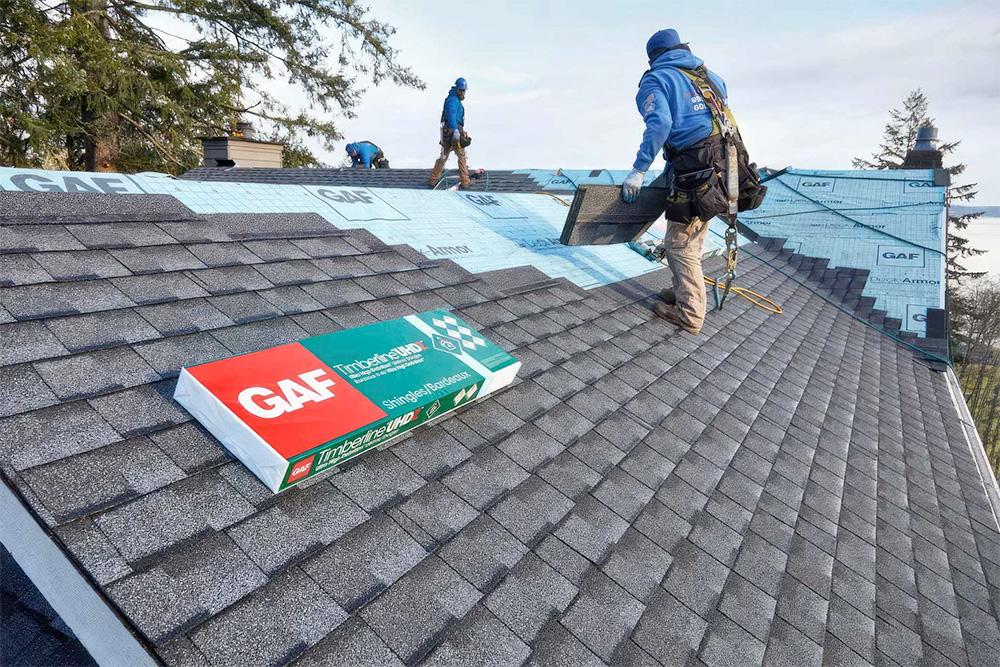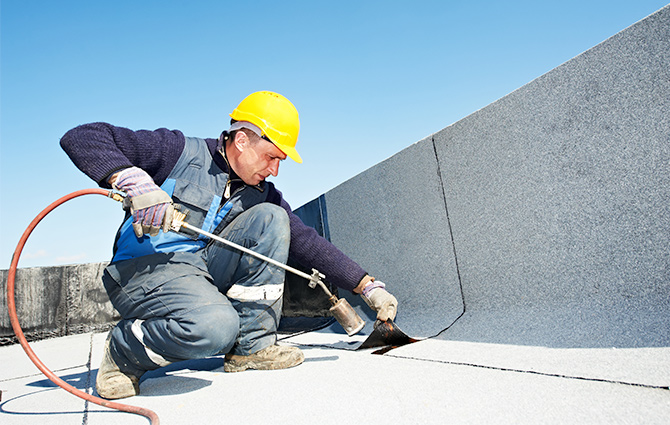Recognizing the Perks of Roofing Flat Roof Installment Techniques
The exploration of flat roofing system installation techniques offers an engaging situation for their fostering in both business and domestic applications. Significantly, these roofs supply substantial cost-effectiveness and energy effectiveness benefits, along with functional style options that can boost building aesthetic appeals. In addition, their low maintenance requirements and potential for environmental advantages add to their allure. Recognizing the full extent of these advantages involves examining various elements that influence their long-term performance and sustainability. What are the crucial considerations in selecting the ideal flat roof for particular needs?
Cost-Effectiveness of Flat Roofs

In addition, the simplicity of installation connected with flat roofing systems can cause lower labor expenses. Because they call for less framework and structural assistance, specialists can complete installments more promptly and effectively. This effectiveness can also translate right into lowered time on-site, further decreasing general expenses.
Maintenance costs can additionally play a duty in the cost-effectiveness of flat roofs. While they might need routine maintenances, their ease of access allows for less complicated upkeep, potentially leading to reduced long-term service expenses. Nevertheless, it is vital to take into consideration the long life and longevity of the roofing products made use of, as these variables can affect general cost-effectiveness over the roofing system's life expectancy. Eventually, flat roof coverings can be a financially viable choice, specifically for business and commercial applications.
Power Efficiency Perks
Level roofs not only offer price benefits but likewise add dramatically to energy effectiveness. Among the main advantages of flat roofing systems is their capacity to fit advanced insulation methods. The insulation can be set up straight above the structural deck, decreasing thermal lowering and bridging heat loss during colder months. This causes lower power usage for cooling and heating, ultimately leading to reduced energy costs.
Moreover, level roof coverings can support reflective products or layers that enhance energy performance. These products mirror sunshine, reducing heat absorption and keeping cooler interior temperatures during heat. This not just improves passenger comfort yet also decreases the reliance on cooling systems, thus additional lowering power costs.
Furthermore, the design of level roofing systems permits for the potential installment of eco-friendly roofs or photovoltaic panels. Green roofings can offer added insulation and minimize the urban warmth island result, while solar panels can harness renewable resource, adding to a lasting energy cycle. Overall, the power effectiveness benefits of level roofing systems make them an increasingly preferred choice in both commercial and domestic applications, lining up with modern power conservation objectives.
Layout Adaptability

Furthermore, the level roofing style assists in the incorporation of photovoltaic panels and eco-friendly roof systems, promoting sustainability while keeping a smooth profile. This adaptability encompasses the option of products, as flat roofs can be built making use of a selection important, consisting of pvc, rubber, and bitumen, each offering unique benefits in regards to durability and aesthetic allure.
In addition, the lack of sloped surface areas permits much easier building and construction and can considerably minimize the general building height, which might be necessary in metropolitan click to read environments - Cuyahoga Falls Roof Repairs. The design versatility integral in level roofs not only improves aesthetic charm but additionally deals with the useful needs of residents, making them a progressively prominent option in contemporary style. This adaptability positions level roofing as a compelling option in design-forward projects
Reduced Upkeep Requirements
While several roof covering systems call for regular maintenance and intensive upkeep, level roofings are designed to minimize these needs, using a useful remedy for building proprietors. One of the most considerable advantages of level roofings is their low maintenance needs, which can result in lasting cost financial savings and less trouble for homeowners and industrial residential property managers alike.
Flat roofings usually include long lasting products such as EPDM, TPO, or changed bitumen, which are crafted to hold up against numerous climate conditions with very little wear. Their design enables very easy access, enabling simple evaluations and maintenance jobs. Homeowner can do routine checks to identify possible issues, such as pooling water or debris buildup, without the complexities commonly linked with sloped roofings.
Furthermore, flat roofings are less susceptible to specific kinds of damage, such as shingle loss or leaks triggered by the moving of snow and ice. This strength additionally adds to minimized upkeep demands. Ultimately, the low maintenance requirements of flat roofing systems not only enhance their allure but likewise supply residential or commercial property proprietors with comfort, recognizing their roof is reputable and effective throughout its life expectancy.
Ecological Effect Factors To Consider
When taking into consideration a roof option, the environmental effect of flat roofings becomes a critical variable for lots of building proprietors. Flat roofs can provide several benefits in regards to sustainability, especially when using eco-friendly products and innovations. For instance, numerous level roof systems use products that are recyclable or made from recycled web content, which helps in reducing the total carbon footprint.
In addition, flat roof coverings can be created to accommodate useful site environment-friendly roof, incorporating plant life that boosts air high quality while providing insulation and stormwater monitoring. This not only boosts the building's power effectiveness yet also minimizes the metropolitan warmth island impact, which is increasingly crucial in largely populated locations.
In addition, flat roof coverings typically promote the setup of photovoltaic panels, allowing building owners to harness sustainable energy. This integration not just decreases dependence on nonrenewable fuel sources but likewise adds to reduce power costs gradually.
However, it is necessary to consider the product selections and installation techniques to make certain that the environmental benefits are maximized. By selecting lasting techniques, flat roofing installations can play a substantial role in promoting environment-friendly building styles, inevitably adding to a much healthier earth.
Verdict

The materials needed for flat roofings, such as EPDM, TPO, or changed asphalt, frequently come at a lowered cost contrasted to the intricate materials made use of for sloped roofs, such as shingles or floor tiles.
In addition, the style of level roofs enables for the possible installment of solar panels or green roof coverings. Overall, the energy effectiveness advantages of level roofs make them a progressively preferred choice in both commercial and domestic applications, lining up with modern-day power conservation goals.
Ultimately, the low maintenance demands of level roof coverings not just boost their appeal however likewise supply property owners with peace of mind, knowing their roof covering system is effective and trustworthy throughout its lifespan.
The low maintenance demands and see this site favorable ecological impact, particularly via the combination of green roofs and solar panels, develop flat roofing systems as a sustainable choice.